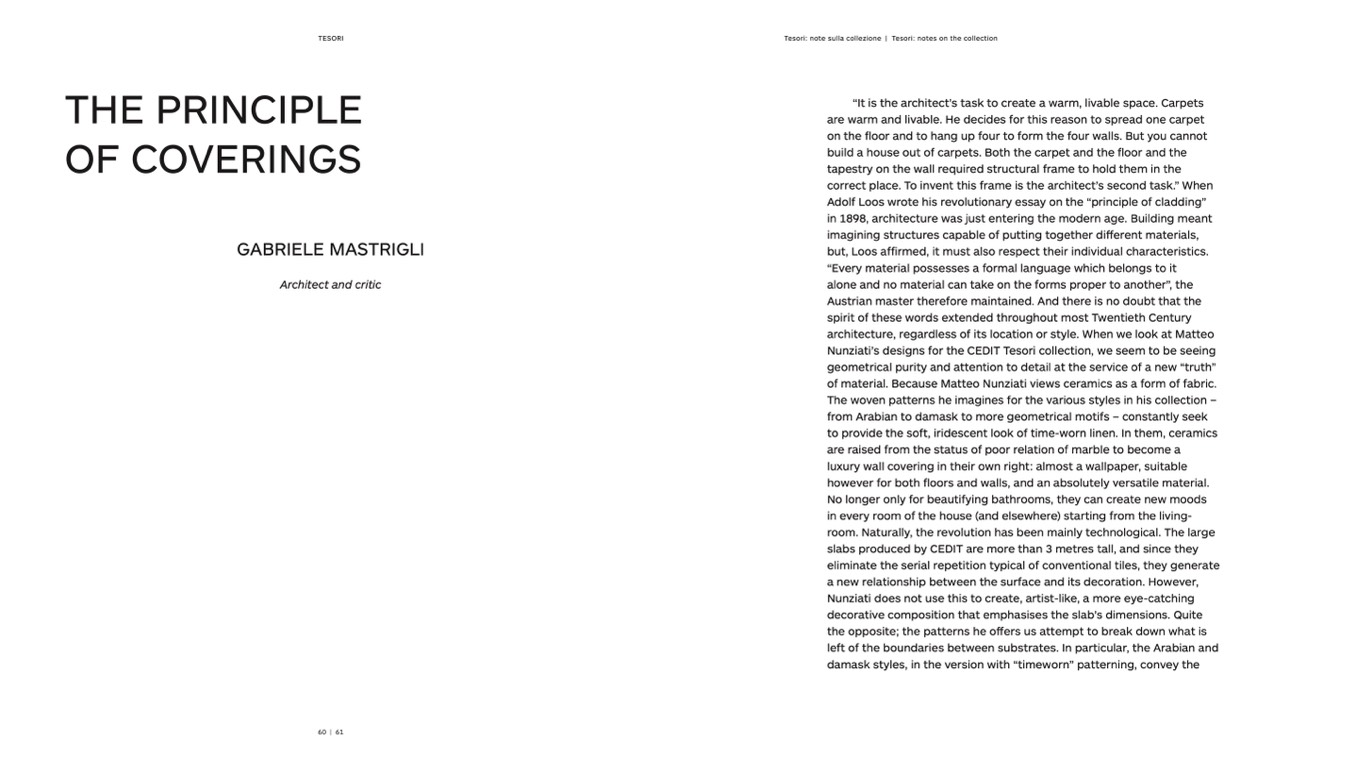
THE PRINCIPLE
OF COVERINGS
GABRIELE MASTRIGLI
Architect and critic
“It is the architect’s task to create a warm, livable space. Carpets
are warm and livable. He decides for this reason to spread one carpet
on the floor and to hang up four to form the four walls. But you cannot
build a house out of carpets. Both the carpet and the floor and the
tapestry on the wall required structural frame to hold them in the
correct place. To invent this frame is the architect’s second task.” When
Adolf Loos wrote his revolutionary essay on the “principle of cladding”
in 1898, architecture was just entering the modern age. Building meant
imagining structures capable of putting together different materials,
but, Loos affirmed, it must also respect their individual characteristics.
“Every material possesses a formal language which belongs to it
alone and no material can take on the forms proper to another”, the
Austrian master therefore maintained. And there is no doubt that the
spirit of these words extended throughout most Twentieth Century
architecture, regardless of its location or style. When we look at Matteo
Nunziati’s designs for the CEDIT Tesori collection, we seem to be seeing
geometrical purity and attention to detail at the service of a new “truth”
of material. Because Matteo Nunziati views ceramics as a form of fabric.
The woven patterns he imagines for the various styles in his collection –
from Arabian to damask to more geometrical motifs – constantly seek
to provide the soft, iridescent look of time-worn linen. In them, ceramics
are raised from the status of poor relation of marble to become a
luxury wall covering in their own right: almost a wallpaper, suitable
however for both floors and walls, and an absolutely versatile material.
No longer only for beautifying bathrooms, they can create new moods
in every room of the house (and elsewhere) starting from the living-
room. Naturally, the revolution has been mainly technological. The large
slabs produced by CEDIT are more than 3 metres tall, and since they
eliminate the serial repetition typical of conventional tiles, they generate
a new relationship between the surface and its decoration. However,
Nunziati does not use this to create, artist-like, a more eye-catching
decorative composition that emphasises the slab’s dimensions. Quite
the opposite; the patterns he offers us attempt to break down what is
left of the boundaries between substrates. In particular, the Arabian and
damask styles, in the version with “timeworn” patterning, convey the
TESORI
Tesori: note sulla collezione | Tesori: notes on the collection
60 | 61

